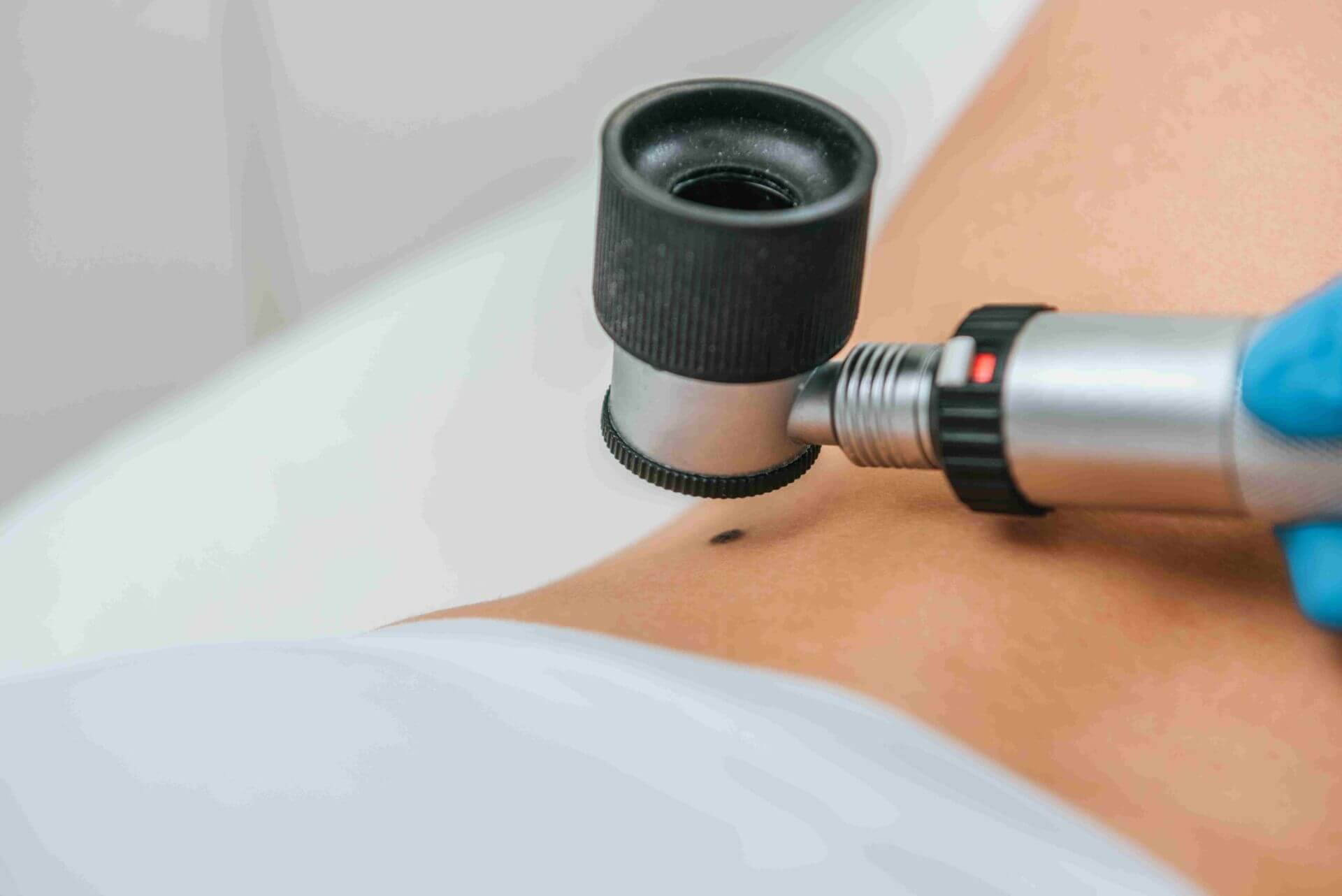Moles are very common pigmented skin growths. Many are there from birth or develop during childhood. Most of the time, moles are harmless and can be left alone. However, sometimes, you may want or need to have them removed. When moles are in a conspicuous place, some may want to remove them for cosmetic reasons. There are also medical reasons they can be removed. Your doctor can inspect and test any moles and remove them as needed. One option for the removal of moles is surgical mole removal. In this blog, we’ll cover this procedure in detail as well as explain when to get a mole checked out.
How does surgical mole removal work?
Using local anesthetic, your doctor will use a scalpel to carefully cut away the mole. If the mole is suspicious, a small part of healthy skin may be removed as well to ensure no possible cancer cells remain. The removed mole can be biopsied to check for any abnormalities. This is an in-office procedure and can be done in one visit. This method can be used with moles that are benign or moles that are suspected of being cancerous. Shaving is another surgical method that can be used. In this method, the doctor will scrape off the mole with a razor.
Does surgical mole removal leave a scar?
That depends on how large and deep the mole is, but for the best chances of minimal scarring and to ensure extra care is taken towards the final appearance of the skin after removal, see a plastic surgeon. They specialize in medical procedures done with aesthetics in mind.
What are the signs you should get a mole checked out?
Other than for cosmetic reasons, a mole should get checked out if it meets any of several criteria that could classify it as suspicious. It’s important to do full body checks every so often to check for suspicious moles. Keep the “ABCDE” criteria in mind:
- A (Asymmetrical): moles should be symmetrical. If you can’t draw an imaginary line halfway through the mole and have both halves look the same, the mole is asymmetrical.
- B (Border): Look at the border of the mole. The border should not be scalloped or otherwise irregular. There should be a clean and fairly sharp contrast between the mole and the skin. The border should not fade into your skin.
- C (Color): Any moles that are a different color than the rest of the moles on your body or that change color over time should be looked at.
- D (Diameter): The diameter of your mole matters. If it’s larger than a quarter inch, you should have it checked out.
- E (Evolving): Any mole that starts out with one characteristic but changes over time may be suspicious. Moles that change color, shape, border, symmetry, or size should be looked at.
It’s important to note that a cancerous mole will not necessarily have all or even most of these characteristics. And at the same time, even if a mole meets several criteria, that does not necessarily mean it’s cancerous, but it should definitely be examined.
Which types of doctors can remove moles?
That depends on the type of mole you’re looking to get removed. A primary care provider can remove a small benign (non-cancerous) mole. But a dermatologist should handle moles that are suspected of being cancerous.
A mole in a conspicuous area, such as the face, ears, or neck, are best handled by a plastic surgeon, who can ensure the mole is removed with as little visible scarring as possible.




